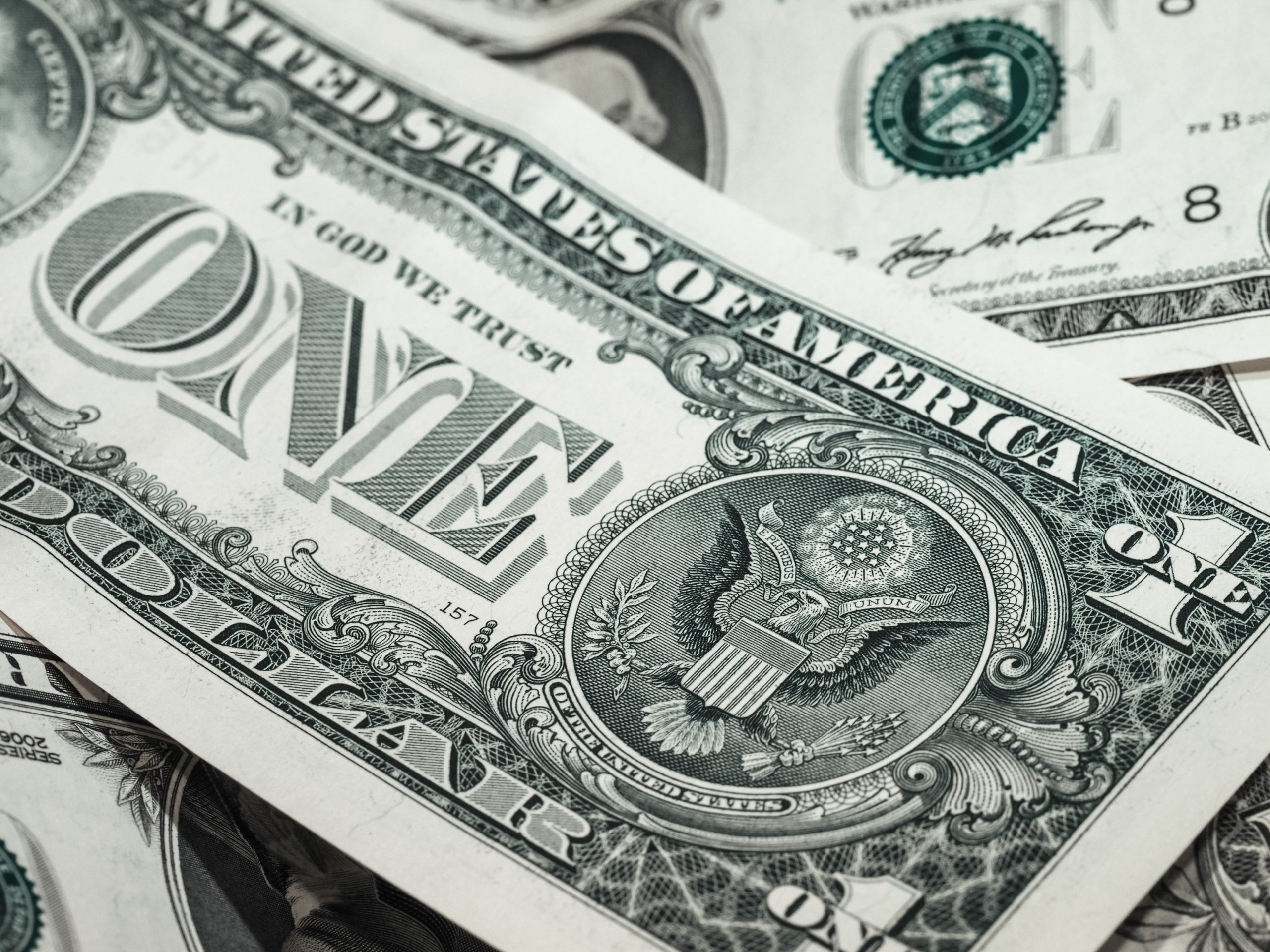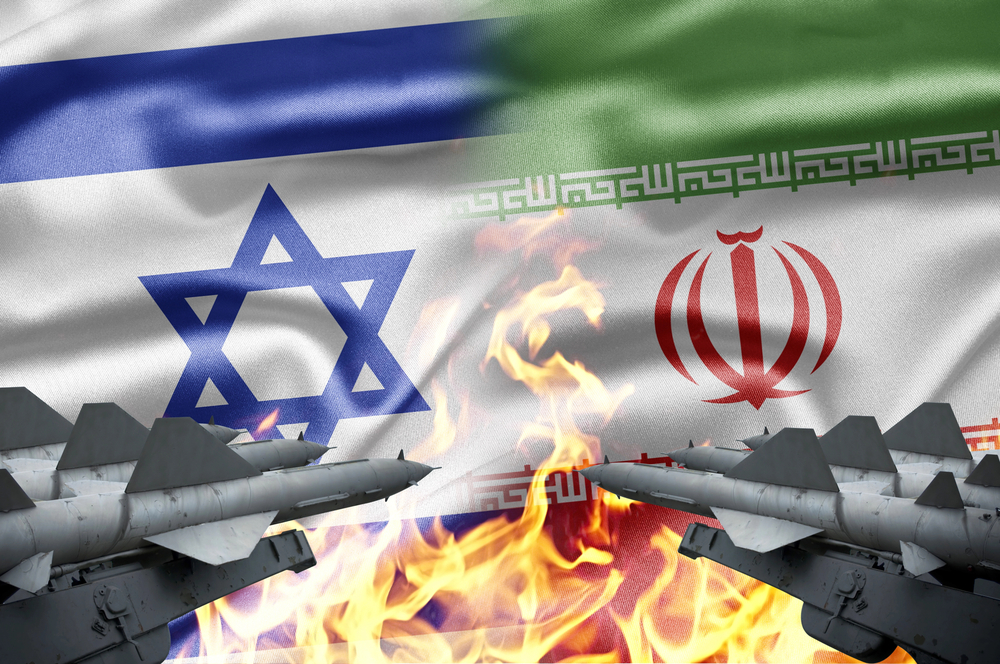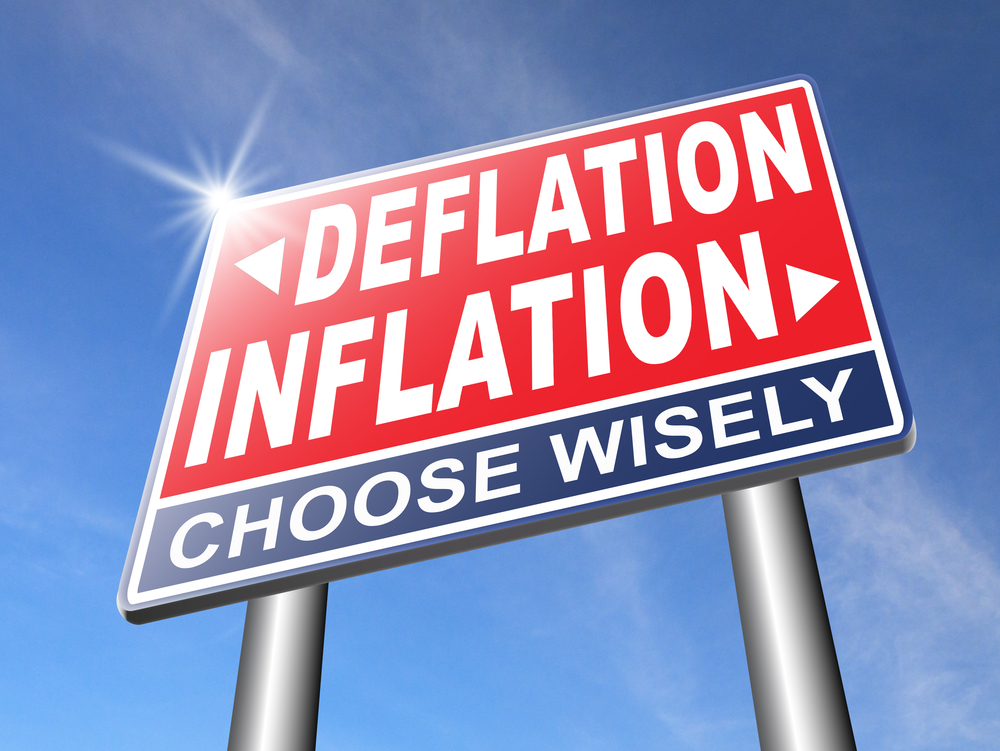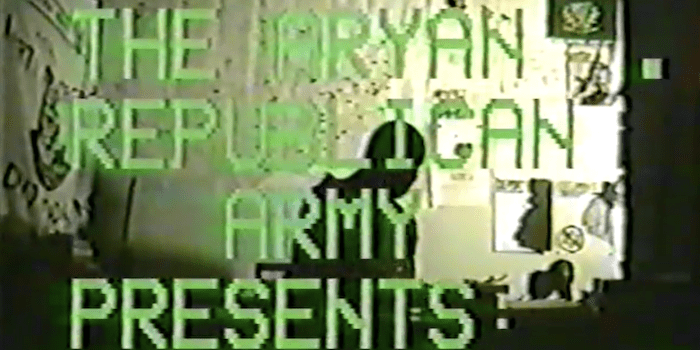There is no question. The United States dollar dominates world commerce. In 2019, it made up 88% of global trade, and no other currencies came close. This dominance gave the United States power over any other country that exports anything from anywhere. For example, due to the mechanics of the petrodollar, oil is settled in dollars regardless of where it comes from. Consequently, not only does this frustrate U.S. rivals by making them vulnerable to trade sanctions, but ultimately causes them to craft savvier innovations to conduct commerce. This is what the Central Intelligence Agency calls blowback.
Blowback (a term which originated within the CIA), explains the unintended consequence and unwanted side effects of a covert operation. The effects of blowback typically manifest themselves as “random” acts of political violence without a discernible, direct cause; because the public—in whose name the intelligence agency acted—are unaware of the affected secret attacks that provoked revenge (counterattack) against them.
This article will chronicle a brief history of America’s dollar hegemony, the strides taken to achieve that position, and the blowback that follows to this day. This piece will demonstrate how much of a fool’s errand it is for a single nation to maintain supremacy over the world reserve currency, and how Bitcoin is reframing the technological innovation of money as we know it by providing a geopolitical and economic safe-haven for the world.
Since the end of World War II, the dollar has been the dominant leader in international trade and cooperation. It officially began in 1944, where 45 allied nations met in New Hampshire at the Bretton Woods conference. The meeting was an effort to avoid the consequences that followed after World War I at the Treaty of Versailles. In 1919, the member nations had met in Versailles to address the insistence of creditor nations for the repayment of Allied war debts and reparations. These demands caused a breakdown in the international financial system and a world economic depression. To avoid similar blowback, the political basis for Bretton Woods consisted of two key conditions:
- A failure to deal with economic problems after the World War I led to World War II
- The centralization of power in a small number of states
Representatives of each nation agreed to peg their currencies to the U.S. dollar, while the dollar would be pegged to gold. Just as they’d done during World War I, America served as Britain and France’s bank by selling them arms, supplies and issued loans to fight in World War II. Most of this financing was paid for in gold, as the Allies turned to the U.S. to help rebuild their countries after the war. Thus, America became the dominant superpower by accumulating two-thirds of the world’s gold reserves.
As the dust cleared from the battlefield, the dollar was the last man standing as the most stable and plentiful currency. The U.S/ became the biggest economy on the global stage and became the world’s bank. Nations continued depositing their gold at the Federal Reserve in exchange for dollars, and used these dollars to store their value through purchasing debt à la treasury bills. This created a U.S. backed “gold standard” and worked fairly well with a gold-pegged dollar. This sound monetary policy created a golden age of capitalism, resulting in a post-war boom as trade flourished via a universal agreement on scarce money.
America continued asserting its global monetary dominance through funding war efforts. In 1965, the U.S. quietly launched a bombing attack in North Vietnam on the Ho Chi Minh trail under Operation Rolling Thunder. The Vietnam Conflict was bloodier, longer, and much more expensive than expected. Naturally, the U.S. began rapidly borrowing money to fund the war and turned the money printer back on.
As America’s incessant printing of dollars increased, so did the suspicions of the Allied nations across the pond. Fearing rehypothecation of their gold reserves and a debased dollar, the Allies margin called the U.S. and demanded withdrawal of their gold. France’s Charles DeGaul was the most aggressive by converting $150 million of reserves back into gold and threatened to convert another $150 million. Consequently, this triggered a bank run on Fort Knox as more nations followed suit. President Nixon retaliated by “temporarily” suspending the convertibility of dollars into gold. By 1971, the dollar officially became a fiat currency. America’s hegemony was hanging in the balance.
America’s position of dollar hegemony was threatened most notably during this time by the Saudi Arabian oil embargo in October 1973. The U.S.’ stranglehold on dollar supremacy was nothing compared to Saudi control of the oil supply. Although it only lasted until March 1974, the embargo had a massive impact on the world economy as gas prices soared from $1.39 in 1970 to $8.32 a barrel by 1974.
In 1974, the Petrodollar was created as a last-ditch effort to maintain the dollar’s dominance. The Nixon administration made a deal with Saudi Arabia where they would only allow other countries to buy oil from them in U.S. dollars. In return, the U.S. would protect them by providing military support and selling them weapons. Unbeknownst to the American public, America would provide Saudi Arabia preferential deals on treasuries if they promised to use dollars to buy back US debt. This arrangement led to the formation of the Organization of the Petroleum Exporting Countries (OPEC) where the combined parties controlled 80% of the world’s oil reserves in dollars. This profit would be rushed back into U.S. treasuries as a form of Petrodollar “recycling.” OPEC allowed the U.S. to keep running up ginormous deficits to finance social welfare programs and the Military-Industrial Complex. This newly created artificial demand for dollars prevented America from devaluing her currency. OPEC strengthened the bond between three main sectors: big corporations, international banks, and the government. These sectors comprise the corporatocracy and were the catalyst of many policy changes and how the global economy would view oil moving forward in order to maintain the flow of petrodollars back into the United States.
In addition to OPEC, America and Saudi Arabia had another arrangement. To avoid another economic catastrophe, the U.S.-Saudi Arabian Joint Economic Commission (JECOR) was formed as a strategic agreement for American corporations to provide infrastructure projects in Saudi Arabia. Former reporter Thomas W. Lippmann describes the agreement as such:
JECOR’s mission was twofold: first, to teach the Saudis—who had no tradition of organized public agencies—how to operate the fundamental bureaucracy of a modern state; and second, to ensure that all the contracts awarded in pursuit of that mission went to American companies. JECOR would operate for 25 years, channeling billions of Saudi oil dollars back to the United States, but would attract almost no attention in this country because Congress ignored it. The Saudis were paying for it, so there was no need for US appropriations or congressional oversight.
The interest Saudi Arabia made in their U.S. treasuries would be paid to American corporations to build their new infrastructure and paid for by the Treasury department. This would reinstall the dollar’s dominance and strengthen American and Saudi relations by liberalizing the Saudi Arabian economy via the amount of money the oil embargo produced for the Saudi kingdom.
At the end of Bill Clinton’s presidency, JECOR discontinued operations. By then, Saudi Arabia had become a fully modern country. However, this new relationship with Saudi Arabia would complicate U.S. relations with neighboring countries in the Middle East and determine foreign policy decisions from here on. Dollar hegemony was restored, but it would not remain without its consequences.
The U.S. made an ally out of Osama Bin Laden by strengthening relations with the Saudi royal family, who had close ties with the Mujahideen, the guerrilla-type militant groups led by the Islamist Afghan fighters in the Soviet–Afghan War. In what would be documented as Operation Cyclone, the CIA would go on to train and fund the Mujahideen to fight the Soviets in Afghanistan. Although these efforts aided in the collapse of the Soviet Union in the 1990s, members of the Mujahideen would later join al-Qaeda and participate in the attacks in New York on September 11, 2001. Continuous blowback has followed since, all for the sake of maintain the economic interests that maintains the petrodollar and solidify America’s dollar hegemony.
The dollar became very liquid as America forced countries to settle crucial commodities like oil, coffee, and gold in her currency. The policy of dollar hegemony is the most efficient way nations buy and sell goods world-wide than any other currency. Thus, both its liquidity and banking efficiency are the two key points that make it easier and cheaper to buy and sell in dollars, but what exactly are the mechanics of the dollar hegemony system that makes it so efficient?
Imagine a Canadian lumber company sells boards to a French home builder. The seller’s bank (Canada) and the buyer’s bank (France) settle the payment in dollars via correspondent banks in the U.S. The correspondent banks have accounts with the Federal Reserve. The money is transferred seamlessly between the correspondent banks’ Fed accounts because their status as such qualifies them as safe counter parties. In the eyes of the United States, the use of all the correspondent banks in other countries means that every transaction is being conducted (technically) on U.S. soil, giving it legal jurisdiction and compels foreign countries to abide by its laws on money laundering and corruption.
The blowback of the dollar’s dominance in global trade is the geopolitical friction it creates for the rest of the world. The only benefactor of this system is America and her allies. This is clearly seen in the standoff between America and Iraq. A Wall Street Journal article by Ian Talley and Isabel Coles, describes the scenario: Iraq says it wants to throw U.S. troops out of the country because America has occupied since the second Gulf War. In response, America weaponizes the dollar by removing Iraq from the U.S. monetary system entirely. One of the main reasons America invaded Iraq in the first place was because former Iraqi leader Saddam Hussein priced oil in Euros instead of dollars. This protest was a direct threat to the dollar’s legitimacy.
Since the attacks on 9/11, America has used the dollar to advance its foreign policy goals to cut out sources of funding for terrorist organizations. The dollar’s tactics of control are:
- increase surveillance of global money flows
- curb financing toward bad actors
This is accomplished by imposing sanctions on rivals. Under this system, if a business or country tried to trade with a sanctioned entity in dollars, America has the power to cut off their dollar access. However, such countries are building workarounds.
We have now arrived at the inevitable blowback of the dollar’s dominance: resistance. Some European Union countries oppose America’s sanctions against Iran. These sanctions were put in after America withdrew from the 2015 JCPOA (Iran Nuclear Deal) in 2018 and included banning dollar transactions with Iranian banks. As a result, countries developed a Euro-backed system, the Instrument In Support of Trade Exchanges (INSTEX) without having to send money across borders. However, the system didn’t prove to be as successful as planned and was disbanded.
In retrospect, the dollar has had a decent run for over half a century as the global reserve currency. As it stands;
- America makes up 20% GDP
- 40% all debt issued is in dollars
- 60% of exchange reserves is in dollars
However, these numbers are changing. Russia announced they will completely remove U.S. dollar assets from its National Wealth Fund. In a research note after the announcement, Russian President Vladimir Putin stated that their messaging is “’we don’t need the U.S., we don’t need to transact in dollars, and we are invulnerable to more U.S. sanctions.”
Russia’s central bank governor, Elvira Nabiullina, told CNBC that digital currencies will be the future of financial systems because it “correlates with this development of the digital economy.” Russia aims to have a prototype of their digital ruble out by the end of 2021, a sure sign that other countries suffering from the dollar’s policy will follow in Russia’s footsteps. Countries victimized by sanctions and strict trade laws will create alternatives beneficial to them.
China still exports goods to America, but doesn’t recycle their dollars like Saudi Arabia. They are losing faith in the value U.S. treasuries hold and are selling them to fund their own economic imperial efforts such as the Belt and Road initiative. The dollar hegemony has created geopolitical and economic blow back where more countries are doing business with each other outside of the dollar system.
No longer are foreign countries buying the majority of U.S. treasuries. As usual, the buyer of last resort is the Federal Reserve. The Fed will continue lowering interest rates and treasury yields will fall until monetary manipulation takes place and owning America’s debt will become unattractive to foreign countries.
On the domestic level, printing and monetizing debt will continue and asset price inflation (as well as health/welfare programs) will price out the middle class and poor. As for America’s economy, the Triffin Dilemma states holding the reserve currency means there will be less jobs at home since the U.S. exports cheap labor. This makes America much less self-sufficient as she depends on the rest of the world for goods and services. As the reserve currency continues to inflate asset prices and dilute the value of investments, the only rational economic decision for American investors will be to find alternatives for storing their wealth.
Eventually, currency wars lead to real wars. China and Europe are competing with America by pumping more money into their systems. Every country is incentivized to devalue their currency to stay competitive. It’s a race to the bottom: the beggar via neighbor policy. Eventually, a country will run out of ways to weaken the currency, making hyperinflation an inevitable reality. It’s only a matter of time every country will react to the dollar’s dominance and search for a greater alternative.
Dollar hegemony faces a much larger threat, now that it’s victim-countries have found a new tool to chip away at its power: Bitcoin. The points above demonstrate how other nation states and Americans themselves are losing faith in the dollar.
Emerging economies are most primed for using bitcoin as a monetary escape. El Salvador adopted bitcoin as legal tender, allowing people to trade freely anywhere in the world without having their savings diminished before their eyes. In the Kingdom of Tonga, remittances make up 40% of their economy but, in real terms, that’s approximately 20% after fees are paid to Western Union. By eliminating these fees entirely, Bitcoin will put more money into the people’s pockets and yield real economic growth and prosperity.
Bitcoin has rules, not rulers. Instead of a nation state hegemon, there are strict rules of the Bitcoin network’s protocol that all participants of the network must abide by in order to participate in the world economy. This is a direct threat to dollar hegemony and America’s ability to control the global trading system. Before Bitcoin, all efforts have been proven futile. Now, with a completely open, permission-less, censorship-free, confiscation-resistant monetary network, any and all countries around the world can trade with each other.
Bitcoin is an economic weapon. Unlike the dollar however, Bitcoin is a weapon of self-defense. Before Bitcoin, countries had no other viable choice but to peg their economies to the dollar and depend on America for economic cooperation. As mentioned above, this has led to countless examples of economic hardship. Bitcoin gives people an option. Opting into the Bitcoin Network guarantees the protection of one’s wealth and property regardless of any entity. Trade through Bitcoin cannot be stopped, and economic cooperation can flourish. Bitcoin is the inevitable blowback the world has desperately needed for over a century. Now, the wait is over.












